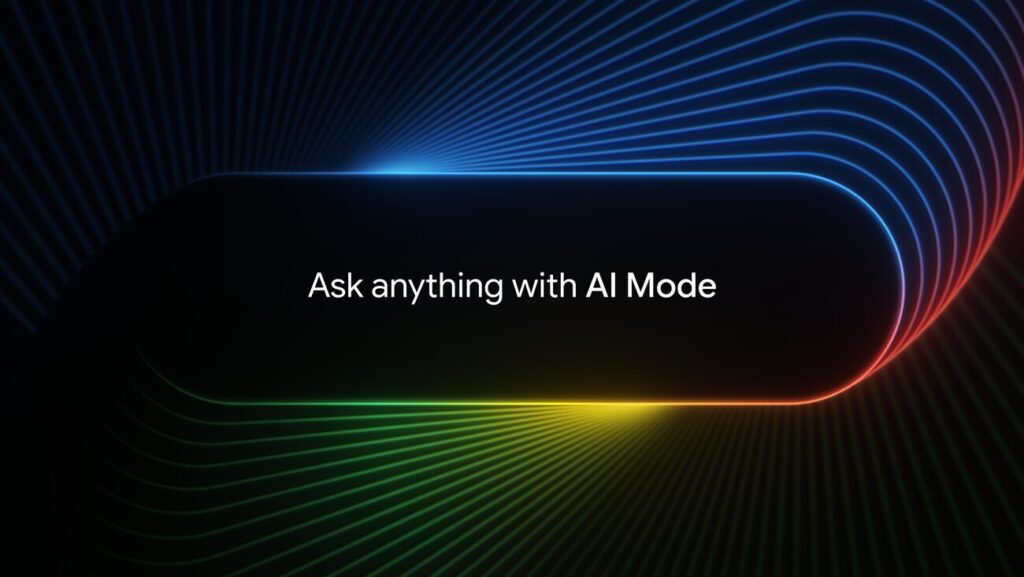Google Search has been our trusted means of searching for decades, but change is looming. Google is launching AI Mode, a completely new style of searching that feels more conversational than entering keywords. Announced at Google I/O 2025, the feature is launching to users in the United States first as a new Search tab.
Toda,y we’ll look at what Google’s AI Mode is and does, and why it’s being called a major shift in the search experience. We’ll also cover its potential impact on content creators, traffic to websites and offer up tips on maximizing the benefits of this new feature.
What is Google’s AI Mode?
Simply put, AI Mode is a new mode in Google Search that applies high-quality artificial intelligence to answer your questions in a conversational and in-depth fashion. Rather than providing you with a list of blue links, AI Mode attempts to comprehend your question and provide a detailed response with references to the related sites. Google’s official release calls AI Mode “our most powerful AI search, with more advanced reasoning and multimodality, and the ability to go deeper through follow-up questions and helpful links to the web,” so basically, a research assistant powered by AI installed directly in Google.
This new mode enhances Google’s previous AI Overviews feature (those summary answers Google experimented with last year). AI Mode advances it further with the ability to provide an end-to-end AI search experience. Expect to see a new “AI Mode” option on the Google search page or app; tapping it will turn your search phrase into a Q&A exchange with Google’s AI. Crucially, the AI will still provide links to the web if you’d prefer to click through to the sources if you need more information or want to fact-check.
“AI Mode is a total reimagining of search with more advanced reasoning.”
— Sundar Pichai at Google I/O 2025
How Does AI Mode Work?
Behind the scenes, AI Mode is driven by Google’s new Gemini 2.5 AI model. This is a next-generation AI brain built by Google’s DeepMind team that can interpret advanced questions and retain context from the earlier part of the conversation. Ask Google a question in AI Mode, and the system doesn’t make a single search; it conducts dozens of searches in parallel. Google refers to this as a “query fan-out” strategy: the AI deconstructs your query and sends several searches at the same time to uncover facts from all over the web.
. It is as if you got a team of specialists to study every part of your query in parallel and then the AI compiles all the information and comes up with a unified answer.
Comprehensive Search Results Without the Click Chase
Thanks to this approach, AI Mode can dive deeper than a regular search. It can draw upon news reports, blogs, maps, product catalogs, and even live data (e.g., weather or stocks) simultaneously. For instance, if you query “What are the top electric bikes costing less than $1,000 specifically for city commuting?“, the AI Mode can search product reviews, the specs provided by manufacturers, user forums, and availability locally at the same time. The response you receive will be a rich summary of the top recommendations, why they are great, current prices, and links to stores and all in a single answer. Then you can ask a further question, such as, “What about those good enough for hilly terrain?”, and the AI will have recalled your context and filtered the results accordingly.
Multimodal Search: Visual Interaction Included
Another standout feature is multimodality – AI Mode does not restrict itself to text alone. It can take in and use images or visual input as well. Google showcased a feature named Search Live that enables you to use your phone camera in AI Mode. Try holding your camera up to a confusing appliance part and saying, “How do I get this fixed?” and have it respond and point out the part and explain how to fix it. Google Lens (its image recognition function) is accessed daily by more than 1.5 billion users, and AI Mode takes this further by enabling you to have a back-and-forth discussion about what you’re looking at. It’s a giant leap towards more visual and interactive search.
A More Conversational Search Experience
For the common user, the implications are that search is soon to become more interactive and conversational. Rather than inputting keywords and browsing through pages of results, you are formulating a question and receiving narrative-style answers. It’s almost talking to a very knowledgeable friend (who’s read the entire internet) about your question. You can ask general or complex questions and then narrow down with follow-ups.
According to Google’s VP Search Products, people are already using it to ask more advanced questions. you have math questions, you have how-to questions, you want to compare two products like a lot of things that aren’t being done before, are likely unique to you.
Summaries with Sources You Can Trust
This conversational feature enables you to answer multi-part questions at a time, rather than doing multiple discrete searches. Most importantly, however, the answers provided in AI Mode include citations, typically a list of web pages or sources that you can click through to. This is Google doing its part to remain open and continue driving users to web pages to learn more. If the AI tells you the range of Electric Bike X is 50 miles per charge and cites a source, you can click the source (for example, a review on a tech site) to learn more or verify the facts. Google emphasizes the fact that AI Mode serves up “useful links to the web” as part of its response.
For users, the result is a handy summary and a gateway to explore further yourself. It’s a best-of-both-worlds solution: fast answers when you want just a quick glimpse and easy access to the entire articles when you want the inside scoop.
Why Users Are Searching More Than Ever
Early data indicates users like the way AI-powered search results work. Google pointed out that the overviews created using AI (the predecessor to AI Mode) have made users more satisfied with their results and led them to search more. Indeed, since debuting AI answers, Google has witnessed more than a 10% increase in Google searches in regions such as the U.S. and India for those types of queries where those overviews are displayed. That means users who experiment with the AI capabilities end up asking more and searching more, presumably since the experience is more engaging and valuable. Essentially, AI Mode can make Google more addictive (positively) by making the results feel more immediately assistive.
The Bottom Line
Google’s new AI Mode is a significant departure from the way we currently use the world’s leading search engine. By accommodating a conversational-style AI aide within Google Search, the company hopes to make discovery more intuitive and comprehensive. People can look forward to quicker answers and the ability to explore deeper into complicated questions without breaking out a sweat. Asking Google a question in 2025 may feel more like having a guide available rather than doing research.
One thing’s certain: Google’s search experience is changing. The arrival of AI Mode demonstrates that Google is no longer merely a gateway to information, but increasingly a savvy partner in responding to our questions. Whether you’re an everyday googler, a heavy user, or a content producer, it’s worth taking a look at this new mode. It may alter the way you search and the way you discover (or share) things on the internet. So, do take a spin if you can – ask Google’s AI Mode a tricky one – and have a look at this significant update transforming the face of search.


